Description
Name in North American Boletes: Boletus luridus
Genus: Suillellus
- Genus 2: Boletus
Species: luridus
Common Name:
Tells: Yellow, blue/green staining flesh has a thin red/purple line just above the tubes. Yellow/red stem has bruisable red netting, esp. at the top. Red flesh in the underground base.
Other Information: Dark red pores age toward orange or dirty yellow, & quickly stain blue. Likes oak, but not exclusively. Distinguished from the other blue-staining, red-pored species by the prominent netting. It can look very similar to Rubroboletus rhodosanguineus, but can be distinguished because luridus blues more profoundly and displays a reddish/purple line where the tubes connect to the flesh (the “subhymenium”). That line is more yellow/greenish in rhodosanguineus. The flesh in the underground base usually bruises dark red rather than blue. The blue staining flesh evolves to eggshell white, before fading away to reveal the yellowish flesh. Widespread in eastern North America but uncommon.
Science Notes: DNA testing moved this mushroom from Boletus to a newly erected genus called “Suillellus”. The species name comes from Europe and will most likely get changed if DNA tests (as usual) show that the two continents have genetically distinct lookalikes rather than a single, panoceanic species.
Edibility: Recently promoted from “Avoid” to “Iffy” based on a combination of factors. First, it was considered an “Avoid” in the old days largely because it looks similar to the bad boy Rubroboletus species. Now that DNA has blown up the red-pored, blue stainer myth, the species deserves to be taken on its own merits. Your author has also spoken with several individuals who regularly eat and enjoy this mushroom, and has learned that the entire Suillellus genus is now viewed as good eating in Europe if the specimens are cooked well and thoroughly. Thus we lack the long experience and evidence to slap a “Good” label on, but can no longer justify an “Avoid” label. “Iffy” is as close as it gets to the true answer, which is, “Work In Progress.”
CHEMICAL TESTS:
- NH4OH (Ammonia): No data.
- KOH: Cap surface turns dark red to blackish. Cap flesh turns orange-yellow after the natural blue stain has faded.
- FeSO4 (Iron Salts): No data.
Links:
 |
573 |  |
0 |  |
126 |  |
312 |

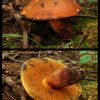
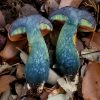
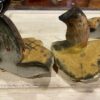
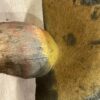
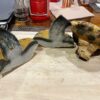
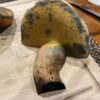

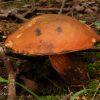
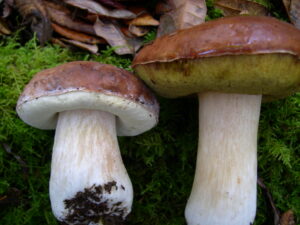
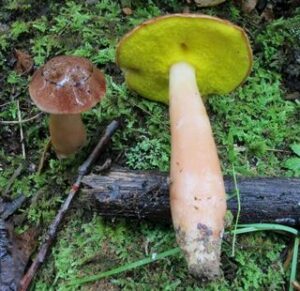
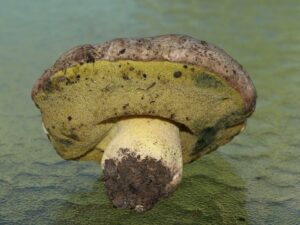
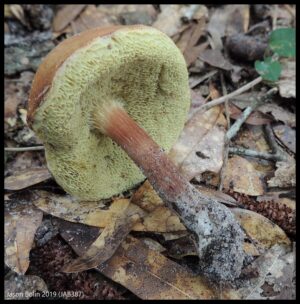
Got something to discuss?